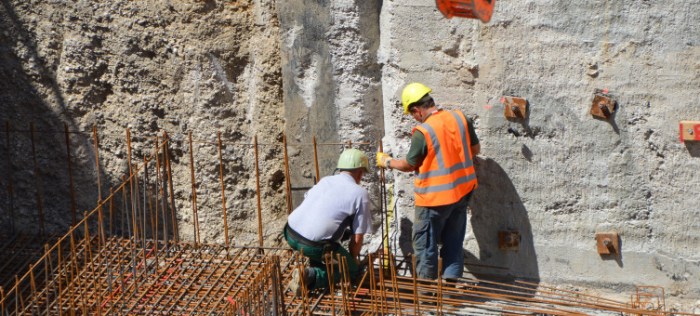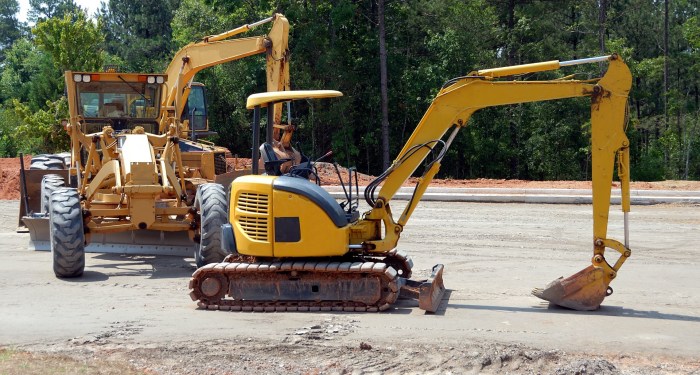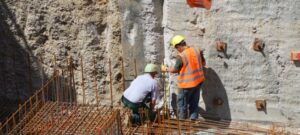
Construction site safety is not just a regulatory obligation; it’s a vital component that ensures the well-being of workers and the efficiency of projects. Every year, thousands of accidents occur in the construction industry, making safety practices crucial to prevent injuries and fatalities. With innovative strategies and proper training, the construction sector is evolving to create safer work environments, ultimately leading to a more productive workforce.
From understanding common hazards to implementing effective safety gear and training programs, this discussion dives into the various aspects of construction site safety. We’ll explore how innovative technologies can enhance safety measures and the importance of cultivating a safety-conscious culture among team members, paving the way for a brighter future in construction.
Importance of Construction Site Safety
Construction site safety is crucial to ensuring the well-being of workers and the efficiency of operations. Safety regulations are not just a legal obligation; they are integral to creating a safe working environment that minimizes risks and promotes productivity. The significance of adhering to these regulations cannot be overstated, as they directly influence the overall success of construction projects.Adopting safety practices significantly boosts worker productivity.
Studies have shown that when employees feel secure at their workplace, they are more focused and engaged in their tasks. A safe environment reduces downtime caused by accidents, enabling projects to stay on schedule and within budget. According to the Occupational Safety and Health Administration (OSHA), construction accounts for one in five worker deaths in the United States, highlighting the importance of robust safety measures.
In 2020, there were over 1,000 construction-related fatalities, emphasizing the urgent need for effective safety practices.
Common Hazards in Construction

Construction sites are rife with hazards that pose risks to workers. Identifying these hazards is the first step to ensuring safety. Common hazards include:
- Falls from height due to improper scaffolding or ladder use
- Being struck by moving machinery or falling objects
- Electrocution from exposed wiring or equipment
- Exposure to harmful substances like asbestos or chemicals
- Slips, trips, and falls on uneven surfaces
Recognizing these hazards involves regular site inspections and employee training. Mitigating these risks can be achieved through various methods, such as using guardrails, implementing proper storage practices, and ensuring personal protective equipment (PPE) is worn at all times. Real-life incidents, such as the tragic collapse of a scaffold in 2019 that resulted in multiple injuries, underscore the consequences of neglecting safety measures.
Safety Equipment and Gear
Essential safety equipment plays a pivotal role in protecting construction workers. Workers must be equipped with the right gear to minimize risk while on site. Common personal protective equipment (PPE) includes:
- Hard hats to protect against head injuries
- High-visibility vests for increased visibility
- Protective eyewear to shield against debris
- Steel-toed boots to prevent foot injuries
- Gloves to protect hands from cuts and abrasions
Regular inspection and maintenance of safety gear are critical to ensuring functionality. Equipment should be replaced or repaired as necessary to avoid equipment failure during use.
Safety Training Programs

Effective safety training programs are essential for preparing construction workers to handle hazards effectively. A robust program typically includes:
- Orientation sessions on site-specific safety protocols
- Hands-on training on the use of safety equipment
- Regular refresher courses to reinforce safety knowledge
- Emergency response training for potential accidents
Certifications and ongoing education play a crucial role in workplace safety, enabling workers to stay informed about the latest safety practices. Engaging employees in safety training fosters a proactive approach to safety, encouraging them to take ownership of their well-being.
Business Innovation in Safety Practices
Innovative technologies are emerging that significantly improve safety on construction sites. Tools such as drones, wearable safety devices, and augmented reality are being implemented to enhance safety measures. For instance, drones can conduct aerial surveys to identify hazards before work begins, allowing teams to address potential risks proactively.Several companies have successfully integrated new safety practices into their operations. For example, a construction firm that deployed wearable devices to monitor workers’ vital signs saw a decrease in heat-related illnesses.
Integrating business innovation with safety management not only enhances worker safety but also promotes a culture of continuous improvement.
Risk Management Strategies
Risk management is essential for minimizing accidents in construction projects. Key strategies include:
- Conducting thorough risk assessments to identify potential hazards
- Implementing safety protocols tailored to specific project risks
- Continuous monitoring and evaluation of safety practices
Developing a comprehensive risk assessment plan involves identifying hazards, evaluating their potential impact, and determining appropriate mitigation measures. Effective risk mitigation techniques, such as safety audits and incident reporting systems, are crucial in ensuring ongoing safety compliance.
Workplace Safety Regulations
The regulatory framework governing safety in the construction industry is designed to protect workers and promote safe practices. OSHA and other regulatory bodies play a vital role in enforcing safety standards. Construction companies are legally responsible for providing a safe workplace, which includes training, proper equipment, and adherence to safety regulations.Failure to comply with these regulations can result in severe penalties, including fines and work stoppages.
Understanding these legal responsibilities is essential for construction companies to maintain compliance and protect their workforce.
Communication and Team Building for Safety
Effective communication is critical in maintaining safety on construction sites. Clear communication channels ensure that safety protocols are understood and followed by all team members. Techniques for fostering a safety-first culture include:
- Regular safety meetings to discuss concerns and updates
- Encouraging open dialogue about safety practices
- Implementing buddy systems for peer monitoring
Team-building activities focused on safety awareness can help reinforce the importance of safety among team members, creating a collaborative environment where safety is a shared responsibility.
Business Management and Safety
There is a significant connection between business management practices and construction safety. Integrating safety management into overall business strategy is essential for long-term success. Companies that prioritize safety often see improved productivity and employee morale.Balancing productivity with safety compliance requires careful planning. Implementing strategies such as efficient scheduling, resource allocation, and ongoing safety training can help companies achieve this balance, ensuring a safe working environment while meeting project deadlines.
Future Trends in Construction Safety
Emerging trends in construction safety are shaping the future of the industry. Technologies like artificial intelligence and machine learning are being utilized to analyze safety data and predict potential hazards. These innovations not only enhance safety measures but also streamline operations.As construction sites continue to evolve, the integration of technology into safety practices will become increasingly important. Predictions indicate that the future will see a greater emphasis on remote monitoring and automated safety systems, further enhancing the protection of workers on site.
Closing Notes
In conclusion, prioritizing construction site safety is paramount for the health of workers and the success of projects. By recognizing hazards, utilizing the right equipment, and fostering a culture of safety, the construction industry can reduce accidents and ensure a more efficient workflow. As we integrate new technologies and innovative strategies, the commitment to safety will not only protect lives but also enhance productivity, leading to a sustainable future for the industry.
FAQ Overview
What are the most common hazards on construction sites?
Common hazards include falls, electrical dangers, machinery accidents, and hazardous materials exposure.
How often should safety equipment be inspected?
Safety equipment should be inspected at least once a month and before each use to ensure it is in good condition.
What role does OSHA play in construction safety?
OSHA sets safety standards and regulations for the construction industry and conducts inspections to ensure compliance.
How can workers protect themselves on-site?
By wearing proper personal protective equipment (PPE), following safety protocols, and participating in training programs.
What are the benefits of effective safety communication?
Effective safety communication helps in preventing accidents, fostering a culture of safety, and ensuring everyone understands their roles and responsibilities.




